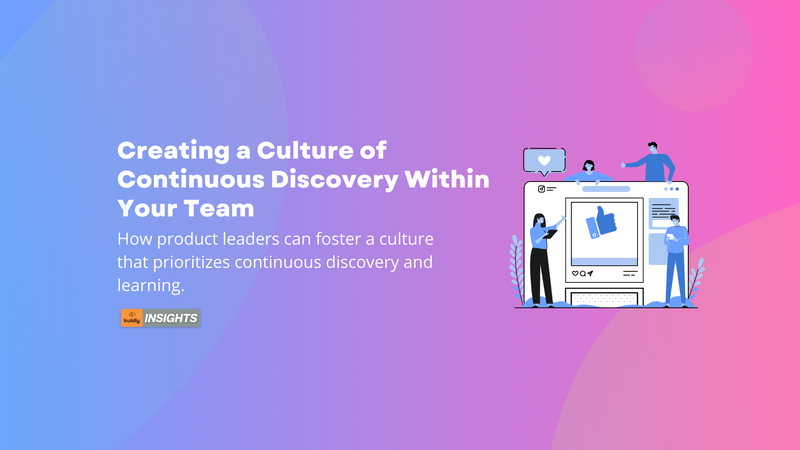Creating a Culture of Continuous Discovery: A Roadmap for Product Leaders

- admin
- Oct. 23, 2023
Creating a Culture of Continuous Discovery Within Your Team
Success in the fast-paced field of product management depends critically on one's capacity for learning, evolution, and adaptation. The idea of "Continuous Discovery," in which the emphasis moves from building to learning and comprehending, was born out of this necessity. Product managers are essential in helping their teams develop a culture of ongoing learning. In this article, we'll look at how product leaders may support a way of thinking that puts constant learning, exploration, and customer-centricity first.
Here's how product leaders can guide their teams toward cultivating a culture of continuous discovery:
Show Your Commitment by Acting: Show a good example. Actions speak louder than words when you are a product leader. Participate actively in market analysis, customer interviews, and user research to demonstrate your constant commitment to ongoing learning. As a result of seeing how important it is that you take the time to study people and the market, your employees will inevitably follow.
Make the Vision Clear: Make sure everyone on your team has a clear grasp of the overall goal of the product in order to maintain motivation and alignment. A unifying goal and compass for their decision-making processes are provided by a compelling and well-defined vision.
Encourage Ownership Regardless of position, encourage each team member to own the process of constant discovery. It is essential to communicate that understanding what customers want and remaining aware of the changing industry is a shared responsibility.
Allocate Time and Resources: Acknowledge that resources and time are required for continuous discovery. Integrate these components seamlessly into your team's regular workflow, rather than treating them as mere add-ons. Think about setting aside money specifically for user testing, research instruments, and other essential discovery initiatives.
Incorporate User-Centricity: Make user-centricity a fundamental organizational principle. Emphasize the value of empathy in determining user demands, and ask "Why" regularly to push the team to explore user motives in more detail.
Engage Cross-Functional Teams: Effective discovery is based on collaboration. Encourage tight collaboration, discussion of insights, and easy integration of these insights into the work of cross-functional teams. Encourage designers to incorporate research findings into their user interface designs, for instance, and provide developers with the tools they need to fully comprehend user pain areas.
Encourage Feedback Loops: To guarantee that decision-making is immediately impacted by the insights gathered from discovery activities, put in place and promote regular feedback loops. This can entail having meetings every week or every two weeks to carefully analyze the results of the study and consider their consequences.
Celebrate Learning, Not only Success: Restructure your company's priorities to include valuing the continuous learning process rather than only highlighting successful product releases. Share stories that demonstrate how newly learned information has resulted in significant changes and course corrections, highlighting the importance of learning opportunities.
Encourage your teams to adopt a culture of experimentation and hypothesis testing in order to support experimentation. Respect the important lessons learned from trials that did not turn out as expected in addition to the results of successful research.
Use a set of key performance indicators (KPIs) to evaluate how well your discovery activities are working. Make sure your method changes and becomes more efficient over time by using these metrics to continuously improve and develop your discovery process.
By implementing these strategies into your leadership style, you can cultivate an environment where learning and adaptability are second nature, resulting in better-informed, user-centric, and productive product development.

